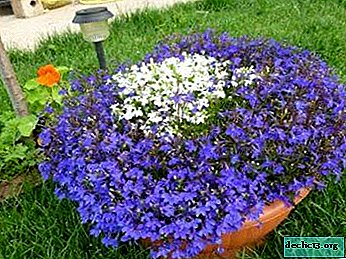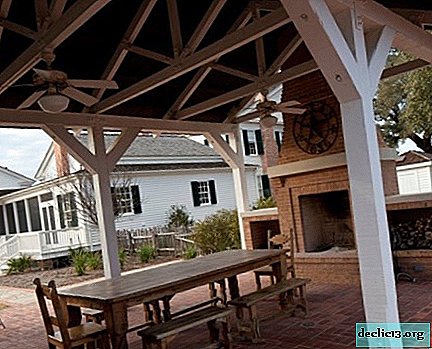How to cook beef broth. Calorie content, benefits and harms of the broth

Beef broth is a light meat broth used in dietary nutrition, digestive disorders, for the preparation of soups, vegetable stews, sauces, gravy. It contains a small amount of protein and nutrients, so it is often served on the table with fillers (other products) to increase calorie content.
How to cook beef broth at home correctly? The answer is simple, cooking beef broth is a simple matter. It is enough to follow the easy rules and know the culinary tricks, which I will discuss in the article.
Homemade broth cooked on fresh beef meat is healthy and tasty. It cannot be compared with food industry products - instant preparations in the form of broth cubes. The latter is not recommended.
How and how much to cook beef broth and beef bones
There are a lot of technologies for preparing the broth; each housewife has her own recipe for preparing a rich and tasty broth, honed to perfection for specialties. But there is a general rule. A quality product requires two ingredients - good meat and clean (filtered) water.
Portions of selected meat (such as a young calf) are an excellent option for a gentle diet broth with sufficient protein content. A more aromatic and fatty fat is obtained by using beef on the bone, which is also suitable for making shurpa.
- The average cooking time for the broth is 3-4 hours. Depends on the size of the pieces of beef, the thickness of the walls of the pan, the temperature set on the stove.
- The optimal proportions of water are 1: 3 and 1: 4. In the second case, the fat will turn out light, with a less pronounced taste.
- Beef spine broth is hard to make transparent. More often it turns out muddy, therefore it is better to use it not for soup, but in the preparation of sauces.
- Fresh dill and parsley are a good addition to the first brew-based dish.
- For 1 liter of water, half a tablespoon of salt is needed.
- Many housewives argue about the time of adding salt. Putting it in the beginning is to get the risk of boiling off the brew and lack of water, toss it in the end - do not “pull” the aroma from the meat and additional ingredients (vegetables), making the dish taste more fresh.
Do as follows: throw a pinch at the beginning of cooking, finally salt at the end.
The classic recipe for flavored beef broth

- water 4 l
- boneless beef 600 g
- onion 1 pc
- turnip 1 pc
- carrots 150 g
- coarse salt 2 tbsp. l
- garlic 1 tooth.
- black pepper peas 6 grains
- ground allspice 10 g
- bay leaf 3 sheets
- cloves, celery, parsley to taste
- Put the beef in the pan. I pour 1 liter of water. I turn on the stove and bring to a boil. Power set at an average level.
- The first broth is cloudy, with a lot of foam. I merge after 5 minutes of boiling the broth.
- I wash the meat on the bone with water several times. I get rid of foam and turbidity in a pan. I pour 3 liters of cold clean water. I throw pre-washed vegetables (whole), parsley, cloves, celery and spices. I leave the salt for later. Bring to a boil. I reduce the cooking temperature and leave for 60-90 minutes.
- I filter the fragrant broth through clean gauze. Add salt to taste.
- The broth turns out concentrated. For soups can be diluted with water. I use boiled meat as a basis for salad or appetizer.
How to make beef broth in a slow cooker

A slow cooker is a useful kitchen appliance that will always help the hostess out, will help in preparing the broth without removing the foam (not every model!) and adding water when boiling.
Ingredients:- Beef on the bone - 600 g.,
- Water - 1.8 l.,
- Onions - 1 piece,
- Carrots - 1 little thing,
- Bay leaf - 2 things,
- Pepper, salt - to taste.
- I take beef on the bone. So the broth will turn out more richly. Rinse thoroughly with water, send to the slow cooker.
- I clean the vegetables, I cut onions into large pieces, carrots - in circles. I put it in a slow cooker.
- I pour water, season with spices, a little salt. I select the "Extinguishing" mode. I set the timer for 2.5 hours.
- When draining the broth, I use a sieve. Ready broth salt to taste.
How to make beef broth transparent? 6 main rules

- I carefully prepare the ingredients. I wash the meat and vegetables. It is better to cook the whole beef or cut it into very large pieces to give gradually.
- I use cold water. Putting meat immediately in boiling water (to save time) I do not recommend if you are interested in rich, transparent and fragrant broth.
- I clean the foam as it appears. You can use a tablespoon, but it's better to work with a slotted spoon. I do not let the foam settle to the bottom of the pan. This will spoil the taste of the finished broth.
- To give a golden color, a small amount of onion peel or a whole onion (unpeeled) will help.
- Boiling and strong boiling are the enemies of a delicious and rich broth. I cook on slow, maximum - medium heat.
- A sieve and multilayer gauze are perfect for filtering. In extreme cases, I use a wet linen towel.
Useful Tips
Lightening the broth. Little trick
To lighten the broth, we will use a guy from egg shells and proteins. Both ingredients are effective absorbents that absorb small parts of turbidity and cleanse the broth.
Ingredients:- Turbid broth - 3 l,
- Eggshell - 2 pieces,
- Egg white - 2 things,
- Lemon juice - half a teaspoon.
- I thoroughly wash the eggs under running water. I break, separate the protein from the yolks.
- I crush the shell with a crush, beat the squirrels. I need foam, so I use a whisk. Add a little citric acid (for a thicker and lush foam).
- I filter the broth through a sieve with a fine mesh, if not, using multilayer gauze.
- I warm the old broth to 60 degrees on the stove. Add crushed eggshell and whipped squirrels.
- Mix thoroughly. The formation of cloudy protein flakes is a sure sign of the gradual pulling of all excess and unnecessary from the broth. Bring to a boil over medium heat. Reduce the temperature. I turn it off after 5 minutes and let it stand for 20 minutes.
- Gently remove the curled squirrel from above. At the bottom there is a pronounced precipitate of meat flakes and our second absorbent - the shell, so I re-filter the beef broth.
The output is not a murky brown slurry, but a liquid of a transparent golden color without loss of taste and aroma.
Calorie content
The nutritional value of the broth depends on the richness, the ratio of meat and amount of water, the quality of beef.
The average calorie content per 100 grams of beef broth is 4 kcal.
A small number of kilocalories is due to the use of meat with a low fat content (7-12%). The indicator depends on the specific piece of beef. The broth contains only 0.2 g of fat per 100 g of product. In general, beef broth is a dietary product.
The benefits and harms of beef broth
Beneficial features
The broth contains a minimal amount of fat, therefore it is actively used in dietary nutrition, including baby food. Hot and rich beef broth helps digestive processes, helps to restore strength. Navar is a source of trace elements - phosphorus, selenium, silicon, helps with colds of mild form, strengthens the immune system.
Beef broth can be made more nutritious by adding additional ingredients - fresh vegetables.
Harm and contraindications
The harmfulness of the broth depends on the quality of the meat. It may contain antibiotics, growth hormones, and other chemicals. Navar on beef bones can become a source of heavy metal salts for the human body. Negatively affects the work of the stomach with constant use.
It is necessary to take a responsible approach to the choice of meat, trust certified products. Wash thoroughly before cooking, drain the first broth (if you are not sure about the quality of beef), cook for a long time.

















